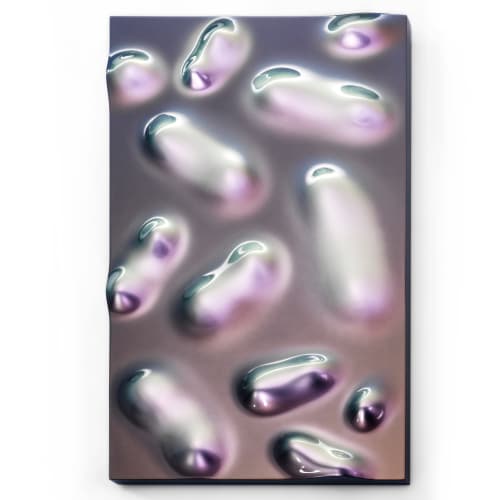With its captivating textures and unexpected media, the work of German artist Willi Siber (b. 1949, DE) surprises again and again. In his hands, heavy steel can seem as weightless as a balloon, while ordinary materials - wood, nails, cardboard - come together in otherworldly, fantastic objects.
Often the components of Siber's works are mysterious, at least from a distance; only on closer inspection do we see that he achieves his miraculous results with simple ingredients, performing a kind of alchemy, transforming everyday matter through ingenious acts of repurposing and recombination.
The paintings, whose innovative techniques come close to sculpture, can be read from a distance as landscapes - aerial photographs of forests perhaps, or ice-covered parts of the Arctic - or as microscopic life forms. Yet we sense that such resemblances to reality are incidental for Siber. As art historian Sabine Heilig wrote of his work, "He is not interested in the aesthetics of the material itself, but rather in the possibility of transforming it.
In addition to its formal inventiveness, Siber's work is also notable for its use of color. With a palette that ranges from muted earth tones to energetic pinks and greens, he seems to instinctively match form and color, as it were. The curved and folded steel tube sculptures, covered with immaculate layers of enamel, possess a luxurious sheen and beckon like jewels, while other works, covered in dark, powdery hues, are calm and subdued - a spectrum reminiscent of the powerful work of minimalist artists such as Robert Ryman, John McCracken and Craig Kauff man.
Born in 1949 and trained at the State Academy of Fine Arts in Stuttgart, Siber has exhibited widely, with numerous exhibitions in Europe, Sydney, Hong Kong and the U.S. His work is in public collections, including those of the Federal Republic of Germany and the German Embassy in Buenos Aires, among many others.
Willi Siber lives and works in Dietenwengen, Germany.
